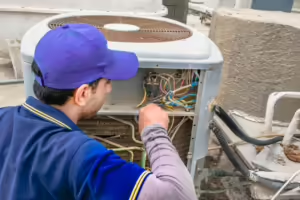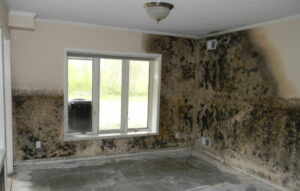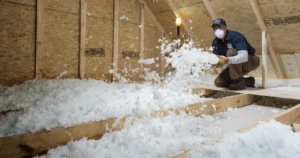Drafty windows can make your home feel uncomfortable, lead to higher energy bills, and cause your heating or cooling system to work harder than necessary. While older windows are often the biggest culprits, even newer windows can develop drafts over time. Identifying the causes of drafty windows and knowing how to fix them can help you maintain a more energy-efficient and comfortable home. Let’s explore the most common causes of drafty windows and provide easy fixes you can tackle yourself.
Common Causes of Drafty Windows
1. Worn or Damaged Weatherstripping
One of the most common causes of drafts is worn-out or damaged weatherstripping. Weatherstripping is designed to seal the gaps between the window frame and the window itself. Over time, it can deteriorate, crack, or peel, allowing cold air to seep in.
- How to identify: Check the edges of your window for any visible gaps where the weatherstripping is damaged or missing. You may also notice cool air flowing in around these areas.
- Fix: Replace the weatherstripping with new material. There are several types of weatherstripping available, including adhesive foam tape, rubber weatherstripping, or felt strips. Simply remove the old weatherstripping, clean the area, and apply the new material to create a tight seal.
2. Cracked or Broken Window Glass
Cracked or broken window panes are an obvious cause of drafts. Even a small crack can allow cold air to enter your home, affecting the overall comfort and energy efficiency.
- How to identify: Inspect the window glass for any visible cracks, chips, or signs of breakage. Pay attention to even small cracks, as they can worsen over time.
- Fix: For minor cracks, you can apply clear nail polish or a glass repair kit to temporarily seal the crack. However, if the glass is significantly damaged, it’s best to replace the window pane entirely. If you’re not comfortable doing this yourself, consider hiring a professional.
3. Gaps Around the Window Frame
Gaps between the window frame and the wall can form over time due to natural settling or poor installation. These gaps allow outside air to infiltrate, making your windows drafty.
- How to identify: Check around the window frame for visible gaps, especially where the frame meets the wall. You may feel cold air coming through these spaces.
- Fix: Use caulk to seal any gaps around the window frame. Choose a weather-resistant, exterior-grade caulk for the best results. Apply the caulk along the edges of the frame, smoothing it with a caulk tool or your finger to ensure a tight seal.
4. Loose or Damaged Window Sashes
The window sash is the part of the window that holds the glass in place and allows the window to open and close. Over time, the sash can become loose or warped, leading to drafts.
- How to identify: If the window feels loose when you open or close it, or if there are visible gaps between the sash and the window frame, the sash may be the issue.
- Fix: If the sash is loose, you can try tightening any screws or hardware to secure it in place. For damaged or warped sashes, consider adding weatherstripping to the edges of the sash or installing a sash lock to ensure the window closes tightly.
5. Poor Window Insulation
Older single-pane windows or windows with poor insulation are notorious for letting in drafts. These windows don’t provide the same level of thermal protection as double-pane or energy-efficient windows.
- How to identify: If you have single-pane windows, or if your windows feel cold to the touch in winter and warm in summer, they may lack adequate insulation.
- Fix: One of the easiest ways to improve insulation is to install window insulation film. This clear plastic film can be applied to the inside of your windows, creating an extra barrier against drafts. For a more permanent solution, consider upgrading to energy-efficient double-pane or triple-pane windows, which offer better insulation.
6. Broken or Damaged Window Seals
The seals between double-pane windows can break over time, allowing air and moisture to enter the space between the panes. This not only leads to drafts but can also cause fogging or condensation between the panes.
- How to identify: Look for condensation or fogging between the panes of glass. This is a clear sign that the window seal is broken.
- Fix: Unfortunately, broken window seals can’t be repaired easily. The best solution is to replace the affected window pane. In some cases, you may need to replace the entire window, depending on the extent of the damage.
7. Old or Improperly Installed Windows
If your windows are old or were not installed correctly, they may not fit properly within the frame, leading to drafts. Older windows may also lack modern energy-efficient features, making them more susceptible to air leaks.
- How to identify: If your windows are several decades old or you notice drafts coming from multiple areas around the frame, the windows may need to be replaced.
- Fix: While temporary solutions like weatherstripping and caulking can help, replacing old or improperly installed windows with new, energy-efficient models is the most effective long-term fix. Look for windows with ENERGY STAR ratings to ensure they provide the best insulation and energy efficiency.
Additional Fixes for Drafty Windows
1. Use Draft Snakes or Door Draft Stoppers
For a quick and temporary fix, place a draft snake or door draft stopper along the bottom edge of the window. These fabric tubes can block cold air from entering under the window frame, helping to reduce drafts in the short term.
2. Hang Insulating Curtains
Insulating curtains or thermal drapes are designed to block drafts and improve the energy efficiency of your windows. These curtains have multiple layers of fabric and padding, which help trap heat inside during winter and keep the heat out during summer. Simply close the curtains at night or when it’s cold outside to reduce drafts.
3. Add Plastic Window Insulation Kits
Plastic window insulation kits are an affordable and effective way to block drafts and improve insulation. These kits typically include clear plastic film that you apply to the window frame using double-sided tape. Once applied, use a hairdryer to shrink the film, creating a tight seal that helps prevent drafts.
4. Install Storm Windows
If you live in an area with extreme temperatures, storm windows can provide an extra layer of protection against drafts. Storm windows are installed over your existing windows and create an additional barrier to block cold air and reduce heat loss.
Final Thoughts: Keep Your Home Cozy and Energy-Efficient
Drafty windows can be a major source of discomfort and energy loss, but with a few simple fixes, you can improve your home’s insulation and reduce those pesky drafts. Whether it’s replacing weatherstripping, sealing gaps with caulk, or upgrading to energy-efficient windows, addressing the problem early will keep your home warm and comfortable while lowering your energy bills. With these tips, you can enjoy a cozier, draft-free home year-round.









